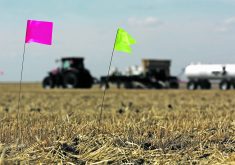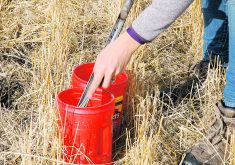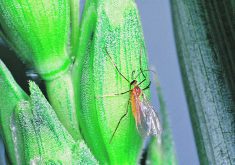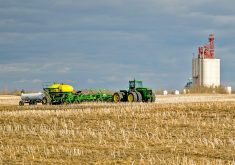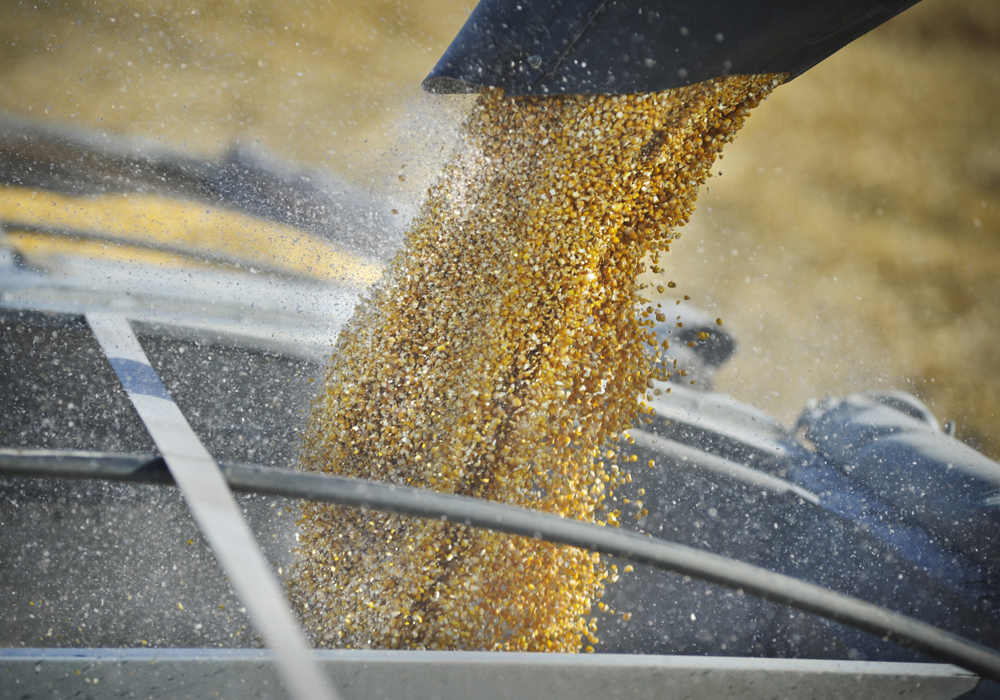It’s been a while. Summer and life have got in the way of me finishing this column. Sorry, I had a lot of positive feedback on my last column in May.
In it I discussed the reason for the desire for crop-based agriculture to reduce greenhouse gas emissions from fertilizer application by 30 percent below 2020 levels by 2030.
A quick review indicates that the agriculture industry accounted for about 73 million tonnes of CO2 equivalent. That ranks our industry fifth among the big emitters.
Those industries ahead of agriculture include stationary energy, transportation, buildings and industrial processes, and manufacturing.
According to Canada’s National Inventory Report for 2019, 73 tonnes of CO2 come from three main sources: enteric fermentation 33 percent, crop production 33 percent, and on-farm fuel use 19 percent.
We can’t discuss GHG emissions in field cropping however, without also discussing carbon sequestration in the same agricultural sector. Carbon sequestration is the yang to the yin of GHG emissions. One set of GHG emissions is adding to the problem, whereas carbon sequestration is removing carbon dioxide from the atmosphere and storing it in the soil, improving the balance of GHGs in the air.
Like we discussed in the previous article, where we looked at the nitrogen cycle, to fully understand carbon sequestration we must look at the carbon cycle. It is much simpler than the nitrogen cycle. Simplified, the cycle consists of the movement of atmospheric carbon into plants, photosynthesis, and other living things.

These living organisms die and are consumed by other organisms that will also die, leaving organic matter in the soil where it decomposes. Animals and other organisms that breath oxygen send carbon dioxide into the atmosphere. The final process in the carbon cycle is the burning of formerly living products, or combustion. This can consist of recent products such as wood, to crude oil from organisms that were alive up to 500 million years ago .
The first important thing to remember when discussing soils and carbon sequestration is that soils can be either a source or sink for atmospheric CO2, depending on the current management and previous land-use and farming practices.
This source or sink behaviour of soils is mainly induced by the photosynthetic process that is impacted by the crops grown, the productivity of the crop as well as fertilizer inputs and the incorporation of crop-residue organic matter into the soil (tillage), and the decomposition of that organic matter by soil organisms.
From a historical perspective, carbon was being sequestered in our prairie and forested areas for the past 10,000 to 18,000 years depending on when the last glaciers receded in your area. This provided the organically rich soils seen in much of Western Canada.
In the latter half of the 19th and early 20th centuries, Western Canada was settled by homesteaders from around the world. They brought with them their farming techniques including plowing and tilling the soils.
Tillage served a number of necessities. It was used to convert the soils from their native state to one that would support agriculture. It was used to prepare the land for planting. It was used to control weeds. It sped the decomposition process, which resulted in the mineralization or release of nutrients (mainly nitrogen) from the organic matter and finally, farmers discovered that fallowing (summerfallow) the land for a year resulted in the storage of moisture.
Conservation tillage practices adopted in the 1990s and expanded over the next two decades have been recognized as positive when we look at carbon sequestration. This has been a point many farm organizations have hung their hats on. The contention is “Look at all the carbon we have already sequestered” into soil carbon.
This is a fact. However, there is little likelihood the government will recognize this fact without factoring in the N2O losses over the same period of time. Surprisingly, these two numbers are almost equal. The amount of CO2 equivalent gasses emitted from agriculture lands in Western Canada is about equal to the amount of CO2 that is sequestered.
Another fact is that western Canadian farmers have done a great job of moving toward conservation tillage. Across Canada, about two thirds of acres were grown under a minimum or no-till management program.
Most of these acres are in Western Canada, specifically in Alberta and Saskatchewan. The regions with the biggest improvement in no-till are southern Manitoba and Eastern Canada.
A couple of paradoxes exist when we discuss carbon sequestration and the GHG emission balance. The first is that the more that is grown on an acre of land, the more photosynthesis occurs and the more carbon is sequestered. The more nitrogen (to a point) that is applied, the more crop that is grown and more carbon that is sequestered. However, as we apply more nitrogen, we also emit more GHGs, mainly as N2O. The other paradox is that both reduced tillage and nitrogen applications improve soil health.
An organization known as Soils.org has been trying to determine what soil tests can be made to measure soil health. An early release from this group states the number one factor to improving soil health is the appropriate addition of nitrogen fertilizers. This is followed by reduced tillage.
A major irritant to many farmers is that while they have been practicing a no-till program for decades, they haven’t been compensated for the CO2 that they have sequestered. This is mainly a Manitoba and Saskatchewan issue because Alberta had a program that compensated growers who adopted agricultural practices and improvements that created carbon offsets for trade in Alberta’s carbon market.
This program began in the late 2000s but ended on Dec. 31, 2021. Ironically, there was similar legislation passed through the Saskatchewan legislature around the same time but was never passed into law. One of the issues regarding the generation of these carbon credits is their permanency and liability. It only takes a couple of passes across a field that has been no-tilled for 25 years to liberate much of the CO2 that had been stored. If growers received money for the sequestration, are they liable for the emissions? Are growers going to sign a paper that will restrict what practices can be done to that field? What happens if the stubble is accidentally burned? These are issues that will have to be dealt with.
Information I have read on CO2 sequestration talks about permanency so be prepared to think about this when looking for contracts that pay you for carbon credits. There are private firms or aggregators that will buy carbon credits from farmers who qualify. If you don’t see it in the contract, ask “what if” questions to the aggregator.
In summary, agricultural soils can be a net emitter of GHGs or a net sequesterer or somewhere in between. The western Canadian crop sector is close to a balance or “net zero” or possibly a slight emitter. Growers are contributing to both the GHG emissions and CO2 sequestration. By using no-till, you will sequester significant CO2 but by optimizing crop production with practices such as the 4R Nutrient Stewardship Best Management Practices, you can optimize nitrogen use and reduce GHG emissions.
Federal Agriculture Minister Marie-Claude Bibeau and her department have repeatedly said the government is targeting emissions from fertilizer, not fertilizer itself, and that they want to encourage the adoption of beneficial management practices that result in lower emissions.
She recently said she does not envision regulating fertilizer use on farms. Thinking about the carrot-and-stick scenario, without a stick, I suggest we could see incentives to adopt no-till and 4R fertilizer application practices. In fact, as I am writing this, an email from the Canola Council of Canada arrived outlining a new program called Canola 4R Advantage. This program will provide financial incentives to initiate or advance these nitrogen management practices when growing canola. Expect to see similar programs from other organizations.
If you are not a part of the solution, you are a part of the problem. I believe we can all agree that for the sake of our children, grandchildren and their children, being part of the solution is an honourable goal.




